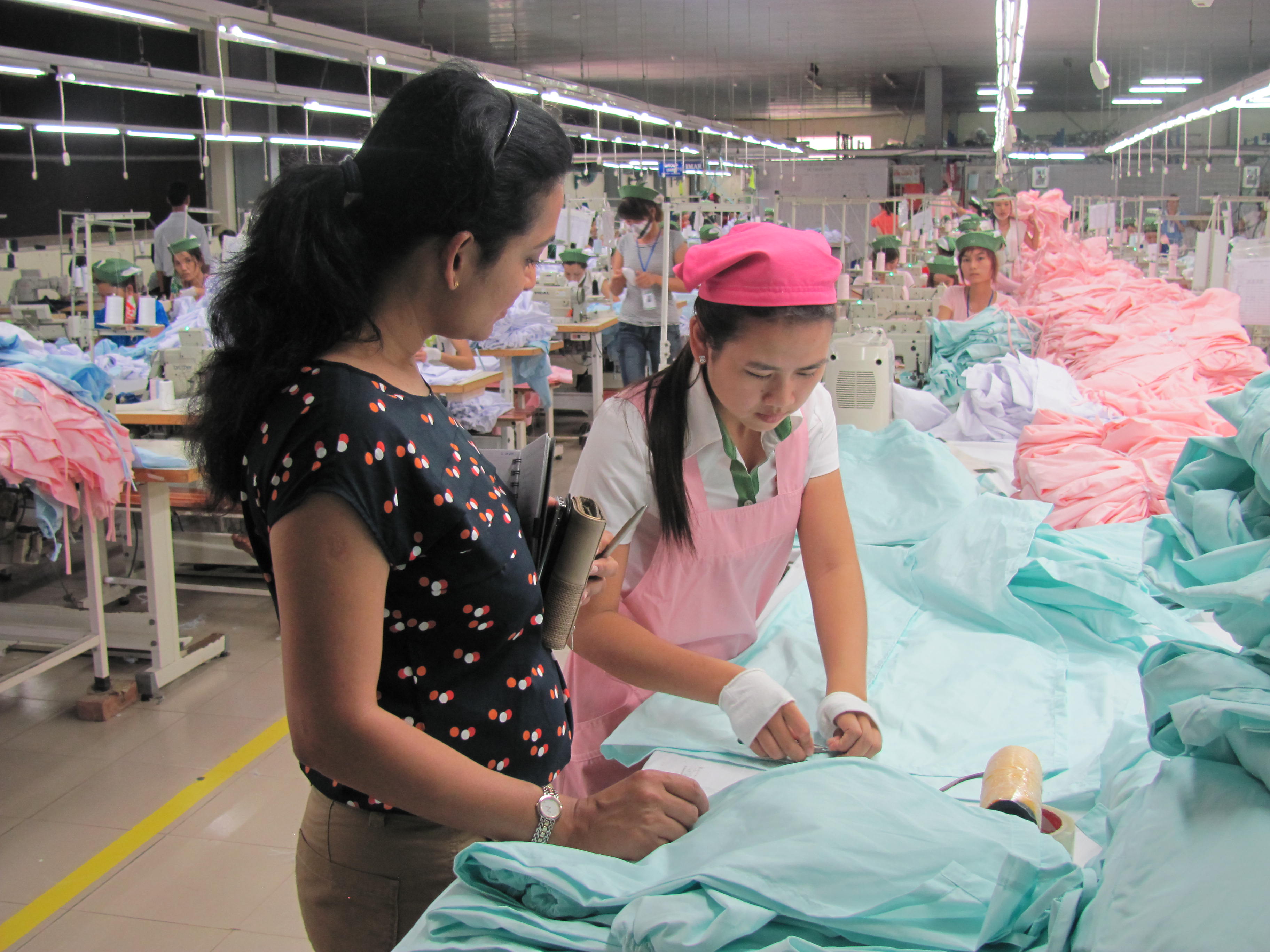Textile and garment sector stands to benefit from EVFTA
 |
| The EVFTA promises to bring opportunities for the Vietnamese textile and garment sector to climb higher on the value ladder |
EU-MUTRAP team leader Claudio Dordi said that thanks to the EU-Vietnam Free Trade Agreement (EVFTA) expected to be signed next year, there will be ample opportunities to upgrade the value chain for the textile and garment sector as the EVFTA will provide tariff preferences to Vietnamese exporters to the EU.
Only “EVFTA originating” products will benefit from preferential tariffs for a maximum of seven years after entry into force.
To be “EVFTA originating,” EVFTA requires textile and garment producers to carry out two production stages in an EVFTA country: Vietnamese producers can upgrade their value chain, adding the “weaving or knitting” stage to the existing “cutting and sewing.”
At present, this operation is particularly challenging, as it requires financial resources and high-skilled workers to manage the high-technology machinery.
“However, for a maximum of seven years, the present 12 per cent duty on textile and garment imports from Vietnam will be removed and, taking into consideration the better legal environment for investment (indirect EVFTA opportunities), we may expect that the EU or other countries’ investors will provide the necessary technology (machinery) to support the upgrading of the garment value chain,” said Dordi, who is also professor of the International Trade Law of Italy’s Bocconi University.
“Investors from other countries may wish to relocate sufficient stages of textile and garment manufacturing to Vietnam to benefit from market access offered by the EVFTA,” Dordi said.
A number of domestic textile and garment firms like Thanh Cong Textile Garment Investment Trading Company and Phuong Anh JSC may benefit from the EVFTA as they have close production chains, from fibre, cloth, yarn, and buttons to finished products.
“We are expecting to benefit from the EVFTA. It is expected that our company’s garment exports to the EU markets will annually increase by 25-30 per cent, thanks to tariff slashes,” said Nguyen Duc Anh, head of Phuong Anh JSC’s Marketing Division producing garments and footwear products.
All materials are sourced from the company’s subsidiaries.
However, many textile and garment firms in Vietnam said they might not be able to enjoy the benefits of the EVFTA.
Nguyen Thanh Thuy, deputy general director of a Singaporean-Vietnamese garment and textile joint venture in Hanoi, told VIR that her company would not be able to benefit from tariff slashes under the EVFTA, though it is exporting products to several European nations.
“It is because the company imports almost all of its materials from Hong Kong, not from EVFTA members,” Thuy said.
Do Thi Nhung, representative from a South Korean garment firm in the southern province of Binh Duong, also told VIR that her firm imports materials from China, Taiwan, and Hong Kong, and products are exported to the US.
This means that this firm will not be able to enjoy tariff incentives under the EVFTA, Nhung said.
According to Dordi, the textile and garment sectors actually show huge differences between each other. Textiles are more capital-intensive, relying on technology and requiring highly skilled workers. It adds higher-value than the garment sector, which is labour-intensive and mainly reliant on low skilled workers.
Vietnam, rich in labour and limited in available capital, is deeply engaged in the low-end of garment manufacturing activities (the “cut and sew” stage of production).
EU-MUTRAP is a project aiming to support the Ministry of Industry and Trade in facilitating sustainable international trade and investment through improving policy making capacity, policy consultation, and the negotiation and implementation of related commitments, particularly vis-à-vis the EU.
| Potential impacts of EU-Vietnam FTA The EU-Vietnam Free Trade Agreement (EVFTA), which is going to be signed in 2018, will boost Vietnam’s GDP by $3.2 billion by 2020, $6.7 billion by 2025, and $7.2 billion by 2030. |
| EVFTA on track to bring new German investors In the first eight months of 2017, Germany was the EU’s largest foreign investor in Vietnam. VIR’s Thanh Tung talks with Wolfgang Manig, Deputy Head of Mission and Economic Counsellor at the German Embassy in Vietnam, about German firms’ views on Vietnam as an attractive investment destination. |
| EU inflows to ride out EVFTA delays A delay in the EU’s ratification of its free trade agreement with Vietnam until next summer will not affect the EU’s investment flow into the Southeast Asian country. |
| EVFTA boosts export-import opportunities between Vietnam and Italy The Italian Chamber of Commerce in Vietnam (ICHAM) and Associazione Italiana Commercio Estero (AICE) jointly held a workshop on July 25 to promote import-export activities between Vietnamese and Italian enterprises ahead of the landmark enforcement of the Vietnam-EU Free Trade Agreement (EVFTA) |
What the stars mean:
★ Poor ★ ★ Promising ★★★ Good ★★★★ Very good ★★★★★ Exceptional
Themes: EVFTA & EVIPA
Latest News
More News
- Global partnerships key to Vietnam’s IFC development (December 26, 2025 | 16:18)
- Vingroup pulls out of bid to invest in North-South high-speed railway (December 26, 2025 | 11:42)
- Strengthening supply chains through trade promotions and customs reform (December 24, 2025 | 14:00)
- PM orders investment model for North–South high-speed rail (December 22, 2025 | 17:43)
- LS Eco Energy to invest in Vietnam rare earth sector (December 22, 2025 | 17:31)
- Government moves to establish International Financial Centre (December 21, 2025 | 21:00)
- Vietnam's IFC to target global investment flows (December 21, 2025 | 18:00)
- Two national hospitals expand capacity with new facilities (December 20, 2025 | 09:00)
- Ha Tinh breaks ground on major Vingroup industrial and energy projects (December 19, 2025 | 18:24)
- EVN launches major power infrastructure projects nationwide (December 19, 2025 | 18:17)




















 Mobile Version
Mobile Version